Asus finds its Zen.
Pros
- Distinctive, compact design
- Fantastic battery life
- Strong specs
- Excellent low light photography
Cons
- Overheating issues
- Only two Android updates promised
- No mmWave support
Our Verdict
Small phones don’t sell. Or so goes the accepted wisdom, especially in a year when it looks likely that Apple will drop the Mini from the iPhone 14 series, and Sony killed off its diminutive Xperia 5 line.
No-one told Asus that though, so it’s bringing back its compact Zenfone flagship – and in fact the Zenfone 9 is even smaller and shorter than last year’s Zenfone 8.
To be fair, the company’s not alone. While Apple and Sony may be moving away from one-handed handsets, Asus itself points out that it’s facing renewed competition from the Samsung Galaxy S22 and Xiaomi 12, both of which are smaller than their predecessors.
The Zenfone 9 is smaller than either though, and thanks to Asus’s efforts to still squeeze in flagship specs this may well be the go-to small phone for Android users – here’s why.
Design And Build
- Compact and light
- Grippy plastic finish
- IP68 rating
There’s a lot to like about the way the Zenfone 9 looks. The obvious starting place is the size – thanks to using a small 5.9in display this is a small phone by modern standards, and at 169g it’s also impressively lightweight.
At 9.1mm thick it’s not the thinnest phone around, but you’d certainly not call it chunky, and that very slight extra thickness feels irrelevant once you factor in how compact the phone is overall.
Available in four colours – black, blue, red, and an off-white – it also boasts a grippy, textured finish. To be honest, I didn’t like this at first; I thought the phone felt cheap and almost like paper, though I’ve mostly come around to the sensation, and certainly appreciate the fact that it feels secure and sturdy. It is different to most phones though, and you may want to check it out in person before committing to the phone.
I’ve also had some problems with the finish during my review. Asus first sent me a white model of the phone, which I found picked up subtle yellow-ish stains within a few days. The company says that I received one of a small batch of white models that never received the final protective coating during manufacture, and the blue replacement I was sent hasn’t had the same issue – but I’d still be cautious about buying it in white.
Display And Audio
- Punchy 120Hz AMOLED screen
- Headphone jack
- Disappointing stereo speakers
The key to the Zenfone 9’s size is the decision to use a 5.9in display. That’s far smaller than most flagships – many of which are pushing close to 7in now – and more compact than even the likes of the Galaxy S22, Xiaomi 12, or iPhone 13 (though it still dwarfs the 5.4in iPhone 13 Mini).
Essentially, this is the best small screen around, with no real compromises apart from its size. The only spec missing is LTPO refresh rate scaling that can improve battery life, but I can’t say I really missed it.
As for audio, the standout feature is the inclusion of a 3.5mm headphone jack – especially impressive in a phone that’s both this small and waterproof, the two common excuses for dropping the jack.
Specs And Performance
- Cutting edge Snapdragon 8+ Gen 1 chip
- Cooling limits performance somewhat
- Up to 16GB RAM
Perhaps the strangest thing about the Zenfone 9 is the specs you’ll find inside.
Asus chose to equip the phone not only with a flagship chipset, but specifically the Snapdragon 8+ Gen 1 – a mid-cycle refresh chip with overclocked performance, mostly found in gaming phones and performance flagships.
There’s a big caveat to that though: cooling. Chips run hot, and cooling tech takes up a lot of space. That’s tricky in small phone, and although Asus tells me that the phone’s thermals are 230% larger than in the previous model, it’s still not enough.
In benchmarks the Zenfone 9 is clearly powerful, but lags significantly behind Asus’s own 8+ Gen 1-powered ROG Phone 6 Pro (and even, at times, last year’s Zenfone 8), especially on the CPU-heavy Geekbench 5 benchmark – though admittedly, that’s a gaming phone with more committed cooling.
That’s not to say the Zenfone is a slouch – just don’t expect a high-end gaming device (though few gamers are likely to be drawn to the dinky display anyway). In regular day-to-day use the phone flies, with no lag or stutter, and together with the 120Hz display it feels exceptionally responsive.
Naturally it supports 5G, though US readers should note that it doesn’t support mmWave, so won’t handle 5G on every carrier. Wi-Fi 6E, Bluetooth 5.2, and NFC round out the connectivity, and it also supports dual-SIM – though there’s no option to expand storage with a microSD card.
Battery And Charging
- Over a day’s battery life
- Excellent longevity for the size
- 30W wired charging
Small phones have small batteries, and thus small phones have short battery lives.
Or do they? Despite the phone itself being a touch smaller, the Zenfone 9’s battery is bigger than before, with a total capacity of 4300mAh.
That’s still small by flagship phone standards (though much larger than the Galaxy S22’s, for what it’s worth) but paired with the 8+ Gen 1’s power efficiency improvements the result is a battery that comfortably lasts more than a day.
Charging is a little limited. There’s no wireless charging support, and wired charging is at 30W. I found it restored 56% of the battery in half an hour, meaning a full charge will take an hour or so. Not bad, but there’s definitely better out there.
Camera And Video
- Dual rear cameras
- Gimbal-stabilised main lens
- Decent selfie camera
If there’s one area where the Zenfone 9 arguably falls behind its flagship competition it’s the camera spec, though it really depends where your priorities lay.
Asus has included just two rear lenses here: a 50Mp main camera, and a 12Mp ultrawide. There’s no telephoto or periscope, nor is there a dedicated macro camera, similar to the lens selection on the Pixel 6 and iPhone 13.
Asus has differentiated things by supplementing the sensor’s built-in optical image stabilisation (OIS) with a six-axis gimbal system for further improved stability. That’s a trick Vivo has used to great effect in its own recent flagships, and is a big part of why we reckon the Vivo X80 Pro has one of the best phone cameras around.
The gimbal helps in a few ways. For one, it stabilises video, giving you ultra-steady footage from the rear camera. But it also kicks in for stills, especially in low light, helping the phone stay steady between the multiple shots taken to power HDR and night mode.
The result is improved detail, especially at night, alongside improvements to dynamic range and exposure – correctly exposing bright light sources rather than blowing them out, for example. These are some of the best night mode photos I’ve seen from a phone at this price, and low light photography is one of the phone’s key strengths.
The 12Mp ultrawide doesn’t have the gimbal stabilisation (nor any OIS, for that matter) but it’s still a decent shooter. It won’t quite match the main camera on detail or dynamic range, but the colour tuning is impressively close, so photos out of both cameras do at least look consistent.
On the front, there’s a 12Mp selfie camera, which for the most part impresses. Colours are punchy, exposure is balanced, and detail is good, though this camera did throw out the shot with the worst visual glitching I’ve seen, where the turquoise of my shirt extends up to my neck and the shirt itself is heavily artifacted.
Software And Updates
- Runs Android 12 with Zen UI
- Software tweaks for one-handed use
- Only guaranteed two Android updates
The Zenfone 9 ships with Android 12, and runs Asus’s Zen UI on top. This is a pretty barebones skin though, and for the most part the phone looks and feels like ‘stock’ Android.
It also uses Google’s own core apps for almost everything, with only one or two additional Asus apps pre-installed.
By default, swiping down on this pulls down your notification tray, though if you prefer you can use it to refresh pages, scroll quickly, or control media playback. It’s a small touch, but one I naturally found myself using a lot for notification access, as it saves the hand adjustment needed to reach the top of the screen.
Similarly, a tiny swipe down right at the bottom of the display activates a dedicated one-handed mode for the phone, while swiping down anywhere in the camera app brings those settings to the centre of the screen. Again, small touches designed to save you from stretching and straining while using the phone.
Price And Availability
The Zenfone 9’s flagship specs do sadly mean flagship prices, and this phone costs a little more than last year’s. It’s available in three versions direct from Asus:
- 8GB RAM + 128GB storage: $699/£699/€799
- 8GB RAM + 256GB storage: $749/€849
- 16GB RAM + 256GB storage: $799/£749/€899
Still, the phone is a little cheaper than the Galaxy S22 or Xiaomi 12, and the top spec 16+256GB model is especially aggressively priced – well worth the upgrade considering that otherwise the storage isn’t expandable.
Check out our ranking of the best small phones for more diminutive options, or our round-ups of the best phones and best Android phones for other flagship alternatives.
Verdict
The Zenfone 9 is a full-force flagship in a small size, and with remarkably few compromises for it.
The 5.9in display makes this one of the smallest phones on the market, especially on the Android side, and comfortably the smallest with specs this strong.
The gimbal-stabilised main camera impresses, especially at night, though with a few visual glitches and issues in bright environments it’s clear Asus has some software tuning to do. Some may also miss the variety offered by rivals, especially the lack of a telephoto lens here.
Given the phone is so good, it’s frustrating that Asus is only promising two years of support, so this will only suit those who know they’re on a regular upgrade schedule. The overall experience is excellent though, with smart software and welcome touches like the IP68 rating and headphone jack.
Specs
- Qualcomm Snapdragon 8+ Gen 1
- 8/16GB LPDDR5 RAM
- 128/256GB UFS 3.1 storage
- 5.9in 120Hz AMOLED display
- Camera:
- 50Mp, f/1.9 Sony IMX766 main camera with OIS & gimbal-stabilisation
- 12Mp, f/2.2 Sony IMX363 ultrawide camera
- 12Mp, f/2.45 Sony IMX663 front-facing camera
- 4300mAh battery
- 30W wired charging
- Dual stereo speakers with Dirac HD Sound
- USB-C
- Headphone jack
- Wi-Fi 6/6E
- Bluetooth 5.2
- Dual-SIM
- Sub-6GHz 5G
- IP68 rating
- Gorilla Glass Victus display
- 146.5 x 68.1 x 9.1 mm
- 169g
- Android 12 with Zen UI



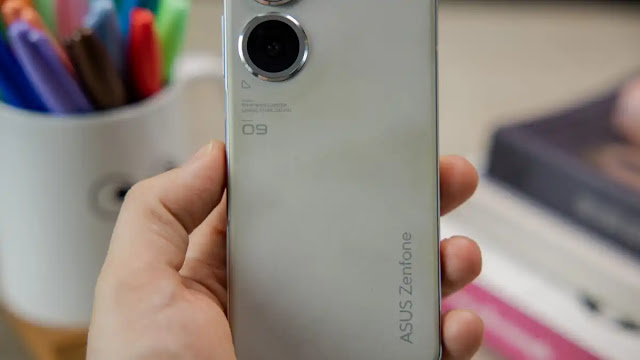


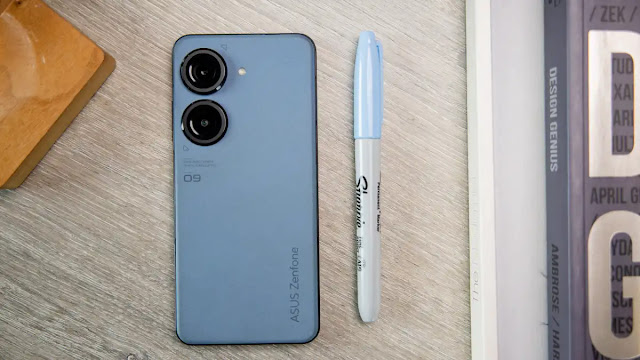
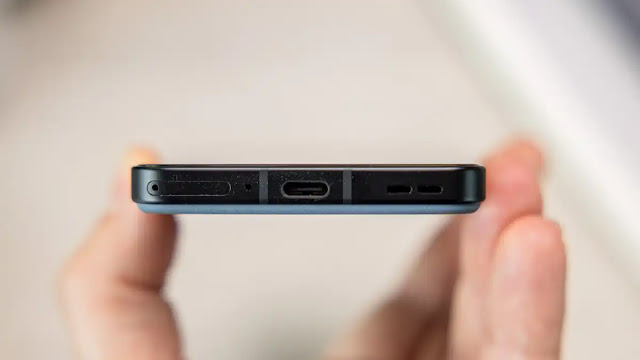














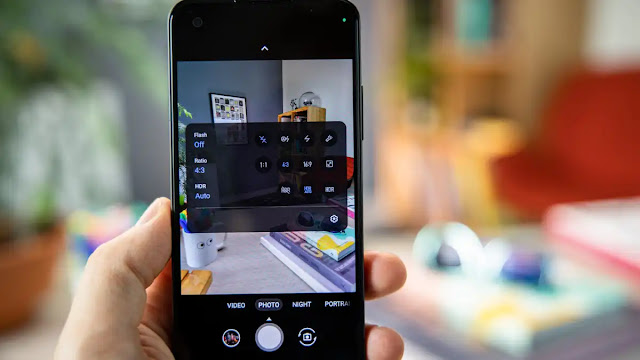
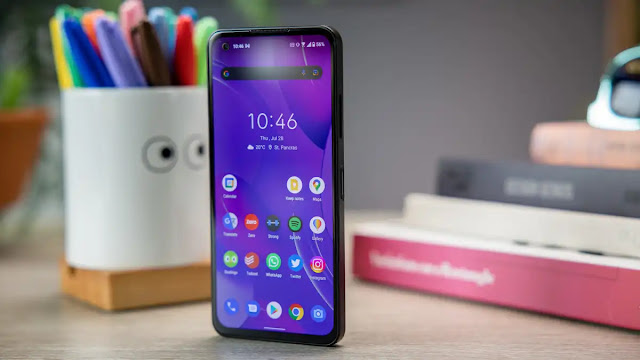

0 comments:
Post a Comment